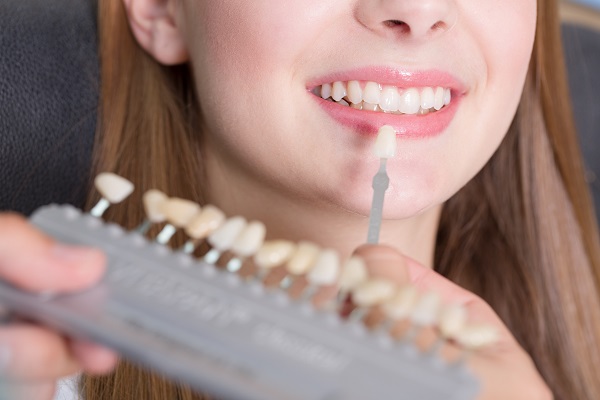Types of Periodontal Treatment for Gum Disease
Periodontitis, also more commonly known as gum disease, affects more than three million US citizens per year and requires specialized periodontal treatment. Gum disease is a serious gum infection that targets the gums and can eventually destroy the jawline if left untreated. Luckily, periodontal specialists generally have many ways to prevent and cure gum disease. These periodontists have additional specialized training to treat gum disease in both non-surgical and surgical procedures.
Non-surgical treatment
If at all possible, periodontal health and curing gum disease should always be achieved by using the least invasive and most cost-effective method. One of the most popular non-surgical methods is scaling and root planing. Scaling and root planing is when the roots of your gums are carefully cleaned to remove plaque and tartar from the deep pockets of your mouth. This can smooth out your original tooth root to help bacteria and toxins find their way out of the body. Essentially, this is an extremely deep cleaning that removes the surface bacteria from further damaging your gums.
There is also a non-surgical procedure called the tray-delivery system. This system is a custom-fit tray that is molded from the patient's mouth. This tray helps deliver medications as prescribed by the professional involved. This technique is still relatively new, and the FDA has not officially cleared the system as a clear-cut way to prevent and kill gum disease.
Regenerative and gum graft surgery
If your bones supporting your teeth are unsalvageable through non-surgical means, you may have to resort to a regenerative procedure. These procedures reverse some of the damage done by gum disease by regenerating lost bone and tissue. For most regenerative periodontal treatment procedures, the gum tissue is removed to eliminate the existing bacteria. This also reduces the pocket depth eaten up by periodontal disease. Regenerative procedures generally see a high success rate if combined with a strict oral routine and additional dental maintenance.
Gum graft surgeries are generally done when your gums have receded from gum disease. Gum graft procedures can also help stop bone loss and protect the roots from further decay done by any sort of infection or disease. Gum grafts cover the roots that are or were being attacked by gum disease. This essentially stops the issue right in its tracks. As an additional bonus, gum grafts are generally known for improving the patient’s smile as well as improving their oral health!
Dental implants
Last but not least, we have dental implants. Dental implants can be a great option for those who have lost bone tissue or actual teeth from gum disease. It is also important to note that for a proper dental implant to take place, the patient will have to have the adequate jaw and bone tissue and structure to support the implant. If you do not have the proper amount of tissue or structure, there are also more invasive implants available that can be modified to accommodate.
Dental implants are a great option for those who have lost multiple teeth and wish to have a smile makeover. Dental implants essentially kick the bacteria out of the diseased location.
Fewer bacteria means more chances for you to regain your confidence and smile! Dental implants are also commonly done alongside gum grafting and other periodontal treatments for gum disease. Without a doubt, gum disease is a prevalent issue, even to this day. However, with these treatment options available, you will have no problem fighting back against the issue!
Are you considering periodontal treatment in the San Antonio area? Get more periodontal treatment information at https://www.preferreddentalcenter.com.
Check out what others are saying about our services on Yelp: Read our Yelp reviews.
Recent Posts
How Can Veneers Improve My Smile?
Only a few people have naturally flawless smiles, which is why treatments like veneers exist. Dental veneers serve as a simple yet effective method of improving the appearance of the smile. Mostly produced from porcelain material, the thin shells are bonded to the front side of the teeth to cover imperfections.To make veneers, the dentist…
Who Is A Good Candidate For All-on-4?
If you have lost your teeth to disease or injury, you have multiple teeth restoration options like All-on-4® dental implants. Replacing lost teeth is essential for proper oral health and function. Since the jawbone, gums and teeth all function as a single system, missing teeth usually have a domino effect, causing further tooth loss, gum…
What Is Sedation Dentistry?
Sedation dentistry allows people who are concerned about potential pain and discomfort to relax during dental procedures. Dental anxiety is common, especially among those who have an unpleasant history with the dentist. Fortunately, there are different sedation dentistry options to give patients a comfortable experience in the dental office.Sedation dentistry involves the administration of a…
Invisalign For Bite Issues
Originally, Invisalign® was only designed to address crookedness, crowding or spacing issues in the teeth. However, over the years, the technology has greatly improved, allowing for advancements when it comes to what issues it can tackle. A common question is whether or not bite issues can be addressed with Invisalign® clear aligners. Each patient is…
Recent Posts
How Can Veneers Improve My Smile?
Only a few people have naturally flawless smiles, which is why treatments like veneers exist. Dental veneers serve as a simple yet effective method of improving the appearance of the smile. Mostly produced from porcelain material, the thin shells are bonded to the front side of the teeth to cover imperfections.To make veneers, the dentist…
Who Is A Good Candidate For All-on-4?
If you have lost your teeth to disease or injury, you have multiple teeth restoration options like All-on-4® dental implants. Replacing lost teeth is essential for proper oral health and function. Since the jawbone, gums and teeth all function as a single system, missing teeth usually have a domino effect, causing further tooth loss, gum…






